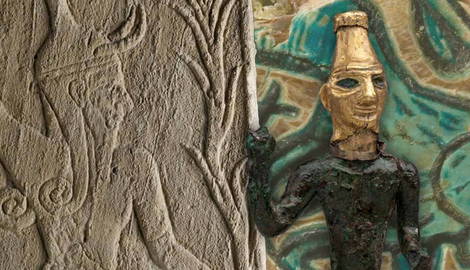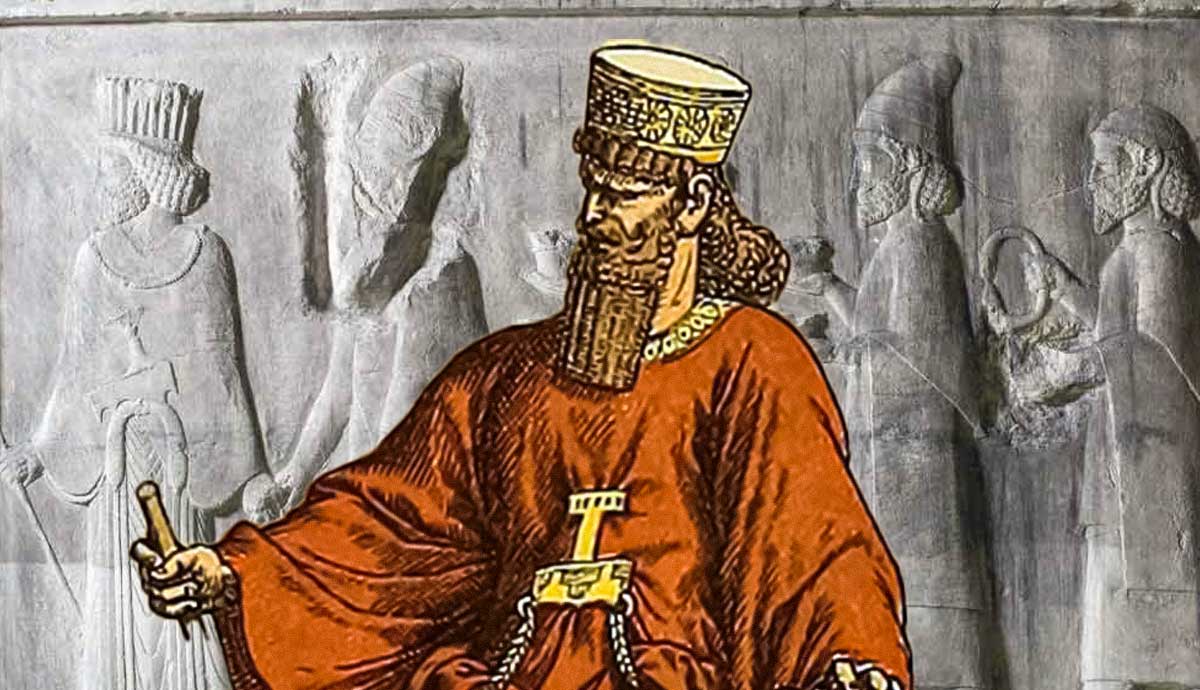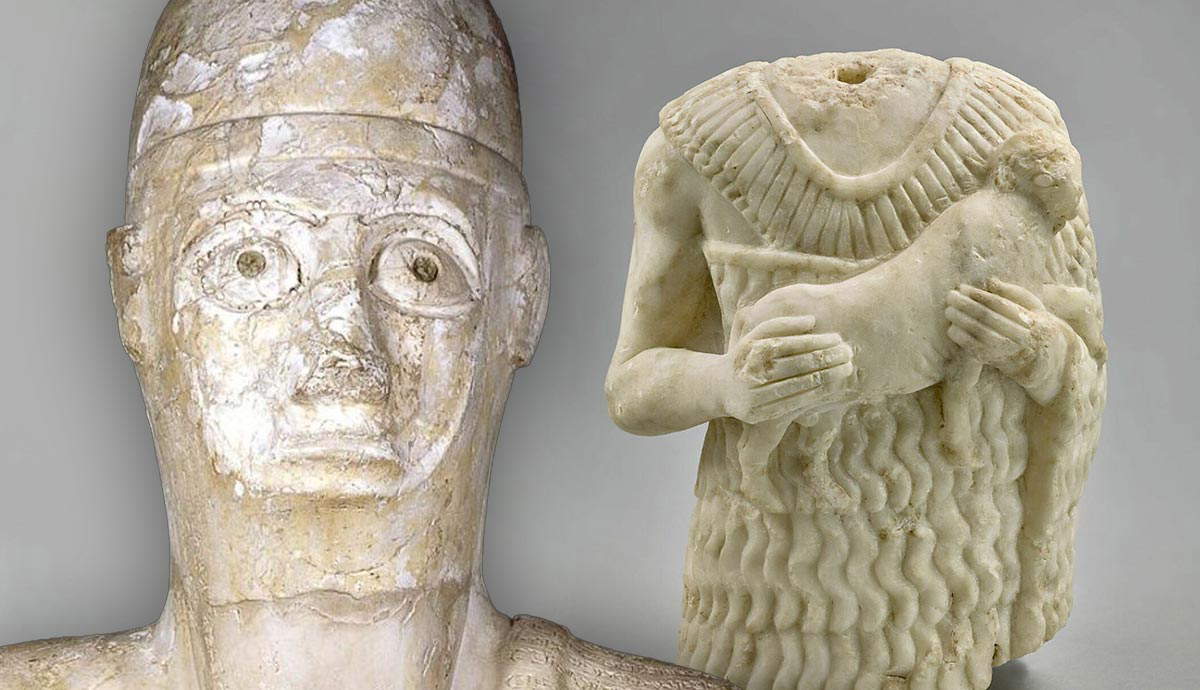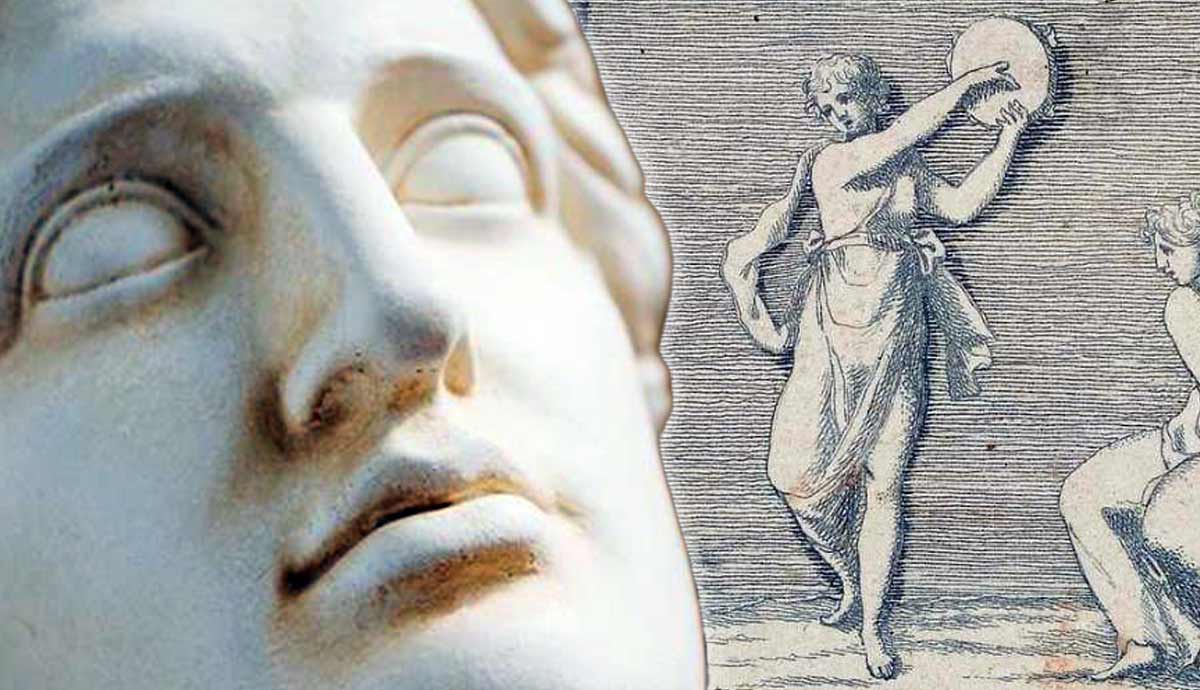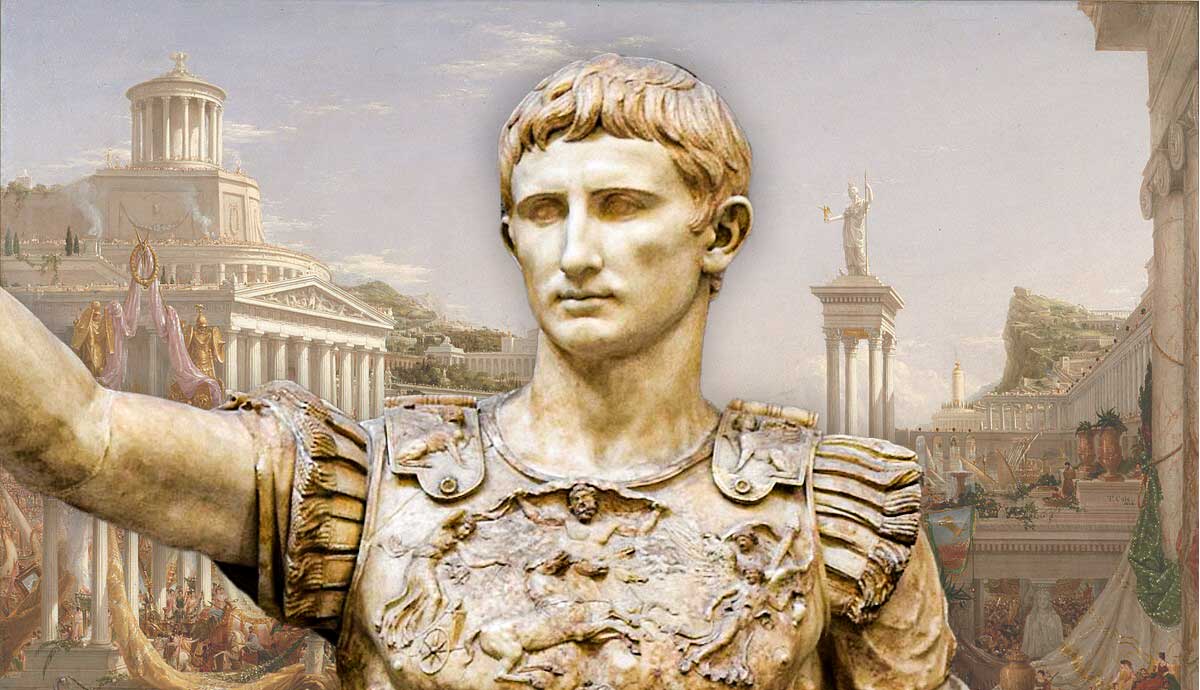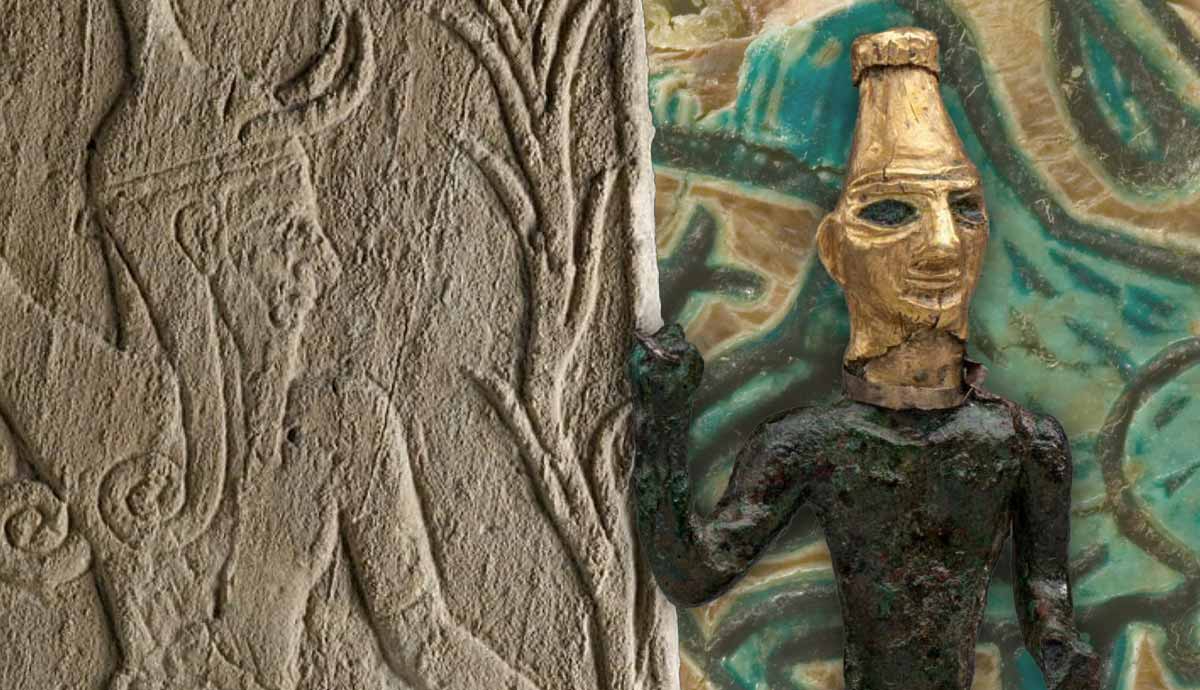
The Canaanites occupied the Levant, sometimes known as Syria-Palestine, during the Bronze Age (c. 3300-1200 BCE). They developed all the hallmarks of an advanced culture, including art, which is perhaps better categorized as “material culture” because it includes objects that were created for practical reasons. Although Canaanite art and material culture was advanced and notable, due to the decentralized nature of Canaanite culture, it was subject to regional variations. Canaanite art was also influenced by their more powerful neighbors, especially the Egyptians and Mesopotamians.
Who Were the Canaanites?

The term “Canaanite” is an ethnic-linguistic reference for most of the Semitic people who lived in the Levant. The Canaanites spoke various dialects of West Semitic, which included Edomite, Moabite, Ammonite, Hebrew, and Phoenician. Despite all Canaanites of the Levant sharing a similar language and other cultural attributes, they were politically fragmented.
By the early Middle Bronze Age (c. 2500-2000 BCE), the standard Canaanite state structure had been established. The structure was generally a fortified city-state ruled by a prince or king. This state structure directly affected the way Canaanite culture, including its material culture and art forms, developed. Because the Canaanites were fragmented, they were generally unable to resist the larger states to their south, north, and west, especially during the Late Bronze Age (c. 1550-1200 BCE). The Canaanite princes were often forced to pay tribute to more powerful kingdoms as colonial vassals. Even the larger Canaanite cities, such as Ugarit, were incorporated into the great empires of the regions.
In terms of art and material culture, Canaanite cities often adopted artistic styles from their more powerful neighbors, which varied by region and era.
Egyptian Influence in the Early and Middle Bronze Ages

Egyptian influence on the Canaanites and the Levant began early and coincided with periods of Egyptian strength. The earliest textual and archaeological evidence of Egyptian influence in the Levant is dated to Egypt’s Early Dynasty Period (c. 3000-2686 BCE), but heavy influence began during the Middle Kingdom (c. 2055-1650 BCE).
The majority of Canaanite material culture and art that has been uncovered from this era are Egyptian-style scarab figurines. The beetle-shaped pieces were often inscribed with the name of the Egyptian ruler, in Egyptian hieroglyphs, and later, the names of local Canaanite princes. The scarabs were used in a funerary context, so most have been discovered in tombs. Because no true Canaanite chronology exists, modern archaeologists have used Canaanite scarabs to create chronologies for each city. With that said, “scarab dating” can be misleading because they were often made after the ruler named on one had died.
Large caches of scarabs have been discovered in the Canaanite cities of Jericho and Megiddo. Egyptian scarabs made in Egypt have also been discovered in deposits with locally made Canaanite “knock offs.” Canaanite attempts to replicate Egyptian artistic styles varied from city-state to city-state. But as the Middle Bronze Age and Middle Kingdom progressed, so too did the quality of Canaanite art.
Canaanite Stone Vessels

The thoroughly modern idea that ancient vases are “art” probably would have seemed strange to most ancient peoples. Ancient people used vases and other vessels primarily for storage, therefore they were practical and never intended to be art in the modern definition. With that said, modern art historians can identify stone vessels by their culture and era, and there is no denying that many ancient jars and vessels are aesthetically pleasing. Canaanite jars, especially from the southern Levant, were clearly influenced by Egyptian styles.
As with the scarabs, Canaanite pottery varied from city to city, but was clearly more Egyptian influenced in the furthest south region. At the site of Tell es-Sakan in the south, a cache of vessel and jar remains has been determined to be either Egyptian or “Egyptianized.” This is important because the site has been dated to the First Dynasty of Egypt (c. 3000-2890 BCE), indicating a very early Egyptian presence in the region. It is unknown if Egyptian artisans lived at the settlement or if locals began emulating Egyptian styles at this time.

In terms of the process, Egyptians did not use a potter’s wheel until the Old Kingdom, which would have made production and reproduction a slow process. Also, by the Old Kingdom, calcite became the preferred material used to make stone vessels in the Levant. By the Middle Kingdom/Middle Bronze Age, Canaanite artisans were skilled enough to create Egyptianized vessels, although Egyptian raw materials were used. Egyptian artisans would often live in the Canaanite cities and instruct their Canaanite colleagues in the art. Stone vessels that came from royal workshops were seen as prestige items that the nobles hoarded as a sign of their worldliness. Vessels that had a cartouche, or king’s name written in the Egyptian hieroglyphic script, were usually created in an elite context.
The Canaanite city of Byblos, which is located on the Mediterranean coast, has provided a treasure trove of artifacts for modern scholars. Prestige items made of obsidian, gold ointment pots, scarabs, and caskets of ivory, ebony, and gold have been discovered in the royal tombs of Byblos. Many of those items were inscribed with the cartouche of the Middle Kingdom Egyptian king, Amenemhat IV (reigned c. 1786-1777 BCE), demonstrating once more the Egyptian influence on Canaanite art. Despite the heavy Egyptian influence in the southern Levant, the Canaanites were also influenced by other Near Eastern peoples.
Mesopotamian Influences on Canaanite Statuary

As the Egyptians influenced Canaanite art in the southern Levant, the Sumerians, and later the Babylonians, were doing the same in the north. The northern cities of the Levant were far more ethnically mixed than those in the south. The southern cities were almost entirely Canaanite in language and culture, while those in the north had a mixture of Canaanite, Amorite, and Hurrian peoples and influences.
Among the more interesting examples of northern Canaanite statuary are a collection of six bronze figurines from the northern site of Tell Judeideh. The figurines were made in Mesopotamia’s Early Dynastic Period, or the early third millennium BCE. A naked female figurine and two male figurines clad only in belts suggest Sumerian influence. A gypsum head from Tell Brak also shows Mesopotamian influence. The size and shape of the eyes of both the Tell Judeideh figurines and the Tell Brak head bear a striking resemblance to the famous group of Sumerian figurines from Eshnunna/Tell Asmar in northern Mesopotamia.

Mesopotamian influence on the Levant continued to grow into the early 2nd millennium BCE and creep further south when Egypt’s influence waned in the late Middle Kingdom. Excavations at the far northern site of Alalakh have uncovered a very important art historical discovery. Among the pottery shards and other remnants of material culture found at the site was a diorite statue head of a ruler. Although the statue has not been identified, modern scholars believe it was Yarim-Lim (ruled c. late 1700s BCE), the first ruler of the Amorite Yamhad Dynasty.

The identity of the figure is less important here as the continuity of the style with the earlier examples. The head resembles the statuary of the better known Babylonian ruler, Hammurabi (ruled c. 1792-1750 BCE). Stylistically the two statues are similar, but that Yaram-Lim’s statue was less “impressionistic” in the face.
The Art of Ugarit

The city of Ugarit was an economically powerful state located on the northwestern coast of the Levant. The Egyptians believed that Canaan ended just south of Ugarit, perhaps because Ugarit was usually a vassal of their rivals, the Hittites, but Ugarit was clearly Canaanite. The people of Ugarit spoke a Northwest Semitic language that was closely related to Hebrew, Phoenician, and the numerous Canaanite dialects. The Canaanite background of Ugarit is also exemplified in its art.
Perhaps the most recognizable piece of Ugaritic-Canaanite art is a stela of the Canaanite storm god, Adad/Haddad, or possibly Baal, now in the Louvre Museum, Paris. The stela depicts Adad holding a mace in his right hand with his arm raised over his head. This is the traditional “smiting” pose that can be found throughout all periods of pharaonic Egyptian history, demonstrating Egyptian influence on Ugarit.

A number of small bronze figurines were also discovered in Ugarit. These figurines clearly show some continuity with similar figurines discovered in the Levant, as discussed earlier, yet they are more detailed and Canaanite in appearance. The figures wear notable Canaanite/Syrian headdresses and are clothed in Canaanite garb, unlike their nude predecessors. All of this demonstrates how Ugaritic art was truly eclectic, where Egyptian and Mesopotamian influences combined to create something new.
Canaanite Art in the Late Bronze Age (c. 1550-1200 BCE)

The Hittites may have ruled the northern Levant in the Late Bronze Age, but their influence on the art of the Levant was minimal. The Egyptians and Mesopotamians continued to be the primary sources of artistic influence on the Canaanites. With that said, Canaanite artistic influences, especially iconography, began to spread outside the Levant in the Late Bronze Age.
The winged griffin motif originated in the Levant and spread to Crete after the late 18th century BCE. From Crete it would later spread to mainland Greece. Winged griffins were commonly used on Canaanite cylinder seals in the Late Bronze Age. The mythical creature represented power, and was also possibly a personification of death, both of which were universal concepts.
Canaanite art is often overlooked by modern scholars because it varied so much from city-state to city-state and from north to south. Because of the non-centralized nature of Canaanite culture, the art and material culture of the Levant was heavily influenced by the Egyptians and Mesopotamians. Through these influences, the Canaanites produced some of the most incredible art of the Bronze Age Near East.
